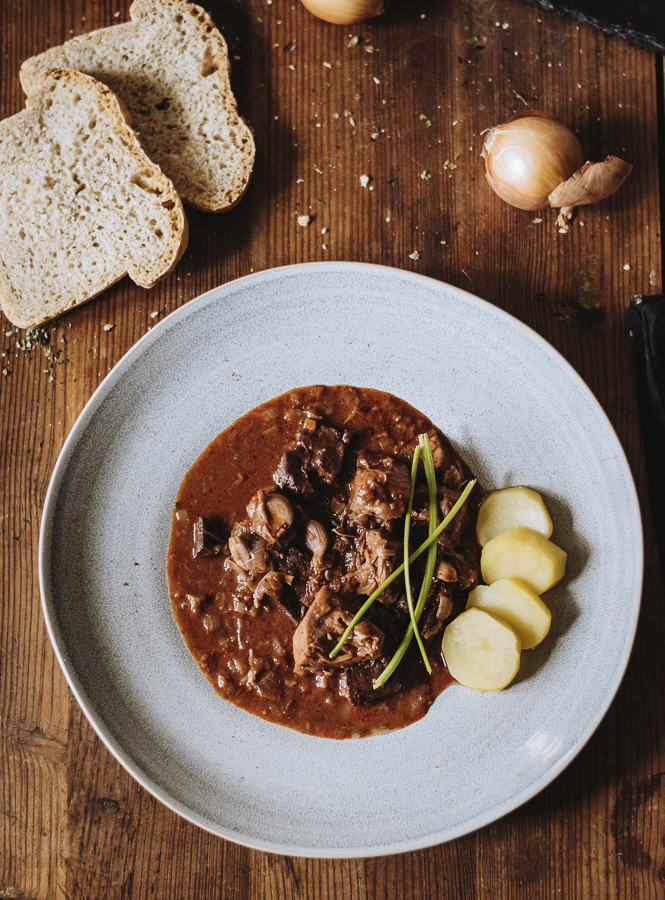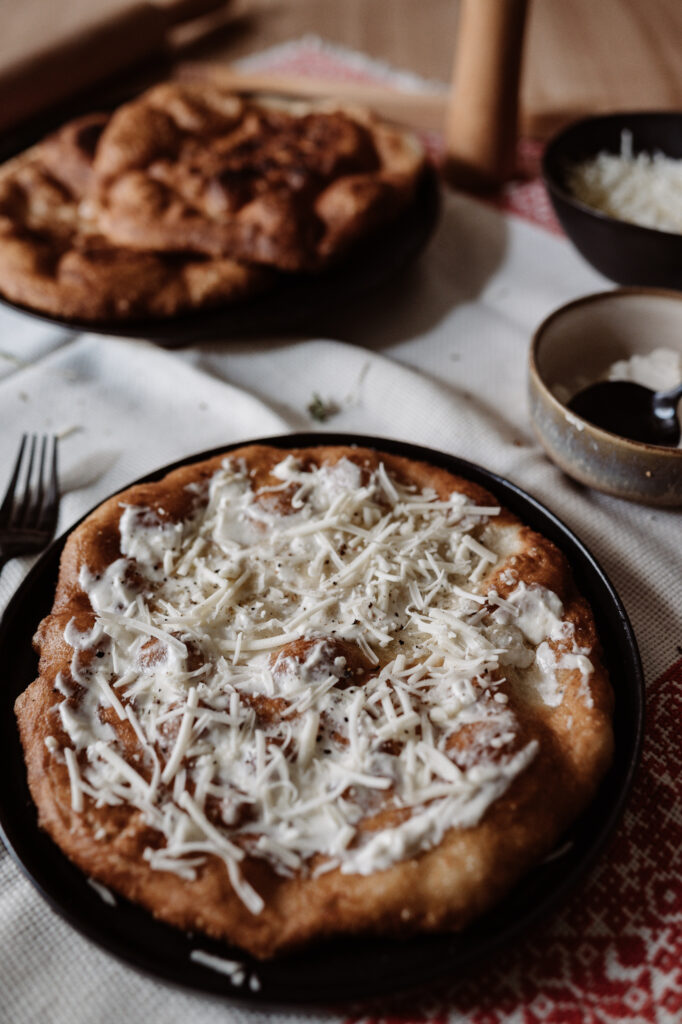
GULYÁS
The trademark of Hungary, Gulyás is a dish with a depth and richness of flavor that will satisfy both body and soul.

Hungary
Like many European countries Hungarian cuisine is influenced by its neighboring countries and historical events such as the occupation of the Ottoman Empire in the 17th century and being part of the Austrian Empire in the 19th century.
Hungary is situated in central Europe surrounded by Slovakia to the north, Austria to the west, Croatia and Serbia to the south, and Romain and Ukraine to the east. The capital city of Budapest is world known and a popular travel destination due to its historical heritage, rich culture, and vibrant vibe.
The beginning of Hungary was in the year 895 when Magyars, the indigenous name for Hungarians, who were nomads, came from the Ural Mountains to today’s region and united their tribes. In the early years, Hungarian cuisine was rather simple and was embossed by Magyars. Most typical dishes were stews which were cooked over fire. The dishes were prepared with few, simple ingredients such as water, onions, and meat. Around this time one of the most famous Hungarian dishes – guylàs was created.
In the year 997, the Hungarian Kingdom was formed under the rule of King Stephan I, and during this time the local cuisine was influenced by German specialties, as King Stephans wife Gizela was from Bavaria. In the 15th century, the Hungarian kingdom was under the rule of King Matthias and his wife’s origin highly influenced Hungarian cuisine. Queen Beatrix, who was of Italian heritage, brought Italian ingredients and spices to the country. Among the newly introduced ingredients were pasta, cheese, saffron and even ice cream. During this period cooking in Hungary was elevated to a higher level, which had a great impact on gastronomy in the country at that time.
But probably the most influential time was during the 16th and the 17th century when Turks invaded Hungary and ruled for nearly 150 years. Hungary as a country was divided into three parts – the Ottoman area ruled by the Turks, Transylvania ruled by the independent Hungarian kingdom and the western and northern parts ruled by the Habsburgs. The Ottoman Empire influenced Hungary in various ways, cuisine being one of them – several new ingredients such as coffee, rice and the most significant one – paprika, were introduced to the country. Hungarians learned how to dry the paprika and use it as a spice, transforming some of the traditional dishes, including the gulyàs. Today paprika is probably the most important spice in Hungarian cuisine, it is often associated with Hungary and is used prominently in several dishes. The Turks also brought new dishes to Hungary – stuffed paprika and stuffed eggplant, which are still beloved dishes in the country. However, at the beginning of the 18th century united forces of the Hungarians and the Habsburgs were able to defeat the Turks and bring the 150-year-old rule to an end. Nevertheless, the Habsburgs still had great power in the country against which Hungarian people were starting to protest. This resulted in brutal conflicts, which were contained by the Habsburgs. The peace didn’t last long and the Hungarian revolutions rose once again against the Habsburgs, which led to an agreement between the two parties hence the Austro-Hungarian Empire was established in 1867. This helped Hungary to flourish and strengthen its economy. During this time both nations’ cuisines were heavily influenced by each other. Gulyás gained popularity in Austria and the Wiener Schnitzel, cakes and desserts from Austria became popular in Hungary. This period of prosperity didn’t last long and World War I and World War II had a huge impact on Hungary and its development. In World War I Hungary fought on the side of Germany since it was part of the Austria-Hungarian Empire, and the end of the war led to the end of the Empire, while through the Trianon Treaty in 1920 Hungary lost a lot of its territory and became Hungary as we know it today. During World War II, the Hungarians fought alongside Germany. Since Germany got defeated, Hungary fell under Soviet rule which lasted for 40 years. The Hungarian people revolted against communism and Soviet domination and in 1989 Hungary became an independent country.
Since the end of Communism in the 90s and joining the European Union in 2004, the Hungarian economy grew over time, which had an impact on the cuisine as well. The country started to put its mark in the culinary world and by 2020 Budapest has 6 Michelin-star restaurants. Also, Hungary is becoming a very important wine region.
Generally, Hungarian cuisine is characterized by heavy use of dairy and meats, and regional vegetables. It includes a variety of stews, soups, casseroles, desserts, and pastries. Bread is a very important part of Hungarian cuisine, and it is eaten almost at all meals, accompanying main dishes. Some of the most beloved dishes are gulyás, főzelék, paprikás, popular street food lángos or famous cake dobos. But vegan dishes are not something that one can easily find in Hungary, so we are happy to present some of the most famous Hungarian dishes in vegan form.

The trademark of Hungary, Gulyás is a dish with a depth and richness of flavor that will satisfy both body and soul.

Famous Hungarian street food – a deep-fried dough covered with creamy garlic sauce – is a snack you need to try.
Thank you for taking your time and reading our recipes! We hope that we have inspired you to try out some dishes.